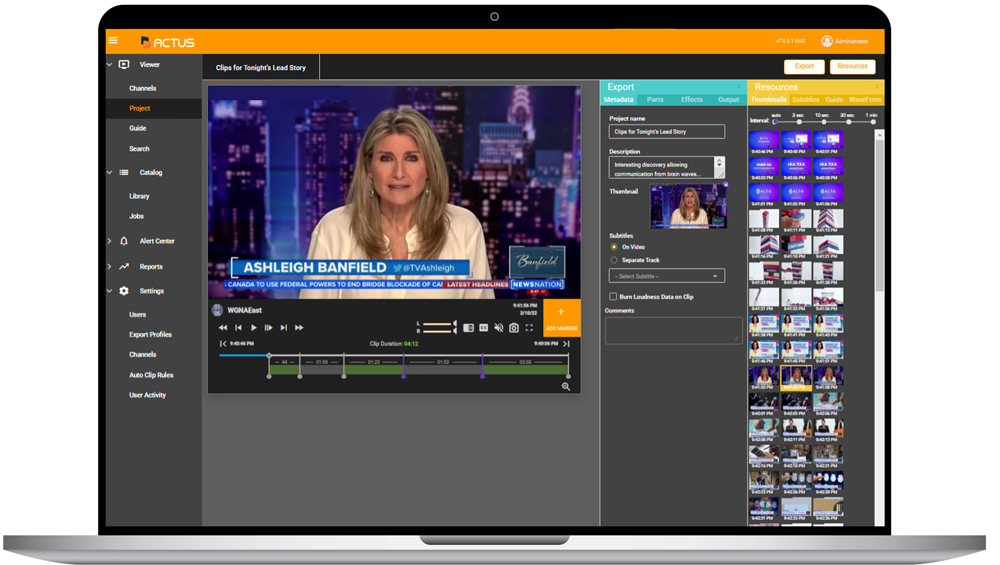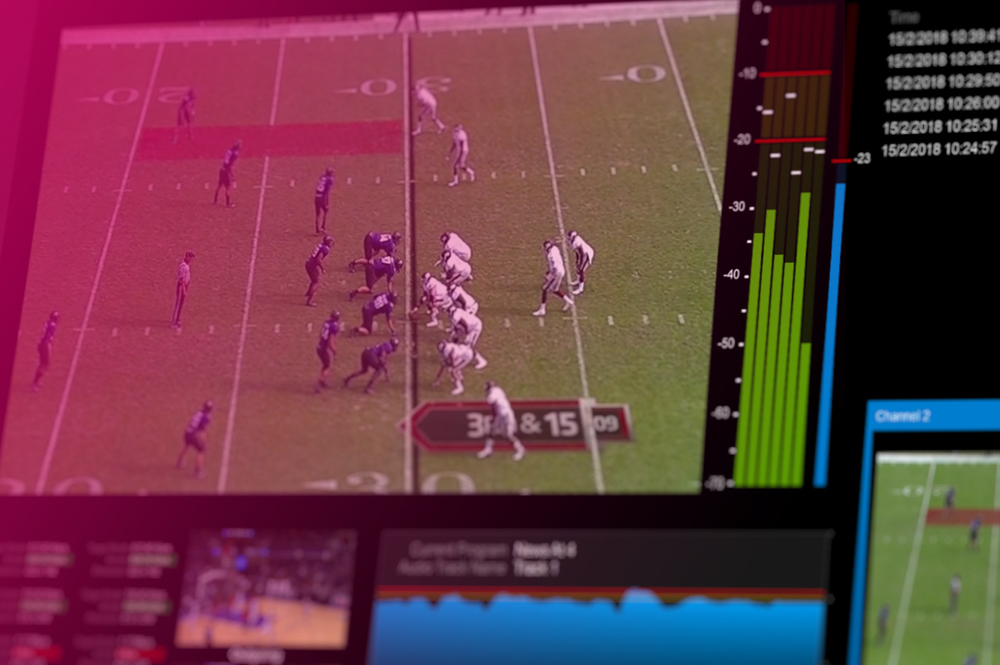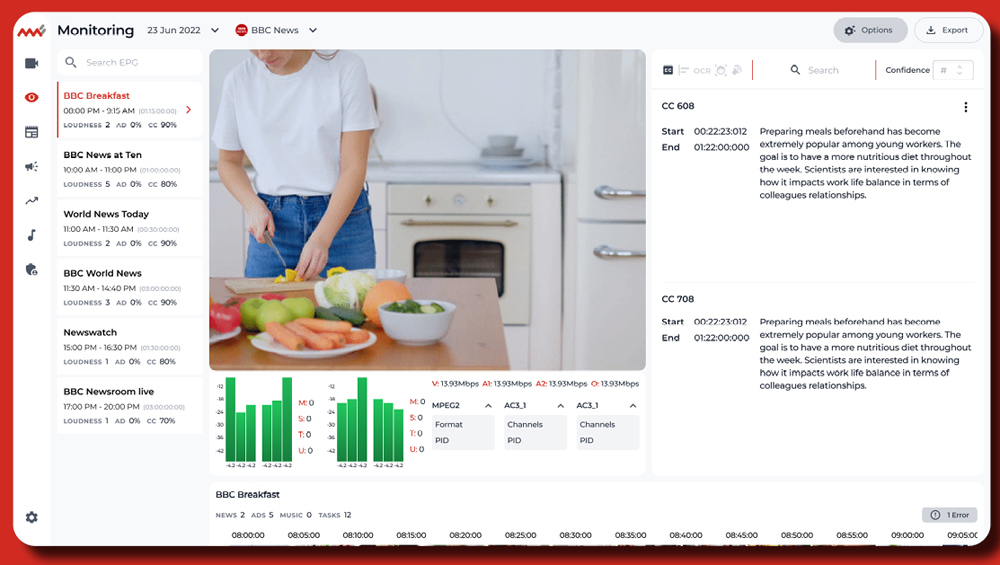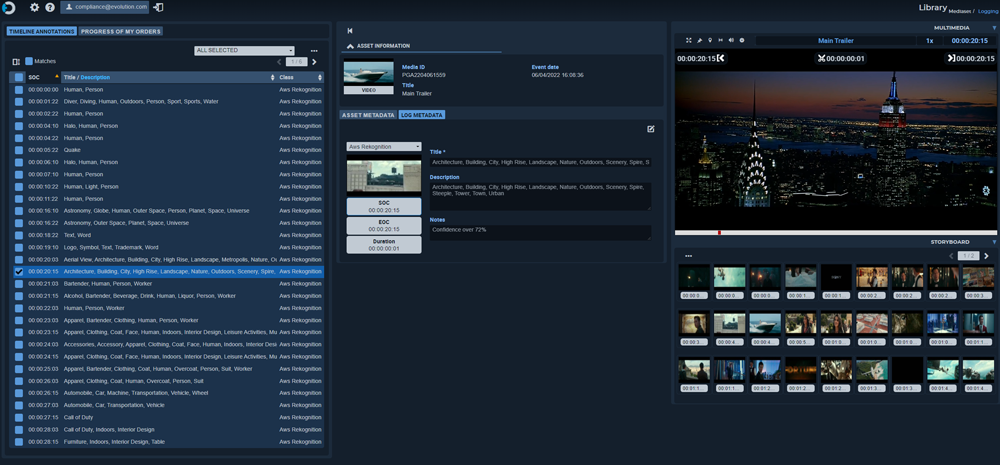
Compliance Monitoring Spreads Its Umbrella

Automation, artificial intelligence (AI) and cloud workflows are all helping expand the capabilities of compliance monitoring tools.
The need to monitor compliance on an explosion of FAST channels means scalability is key. These tools are calling on automation, AI and cloud workflows not only to speed up compliance monitoring but also to repurpose content and monitor advertising. The monitoring technology also needs to be able to handle compliance for ATSC 3.0 content. Regulations for monitoring over the top (OTT) are in the works, which further expands the scope of compliance monitoring, although some are already following broadcast best practices with their OTT feeds.
Mediaproxy CEO Erik Otto says scalability is increasingly important in compliance monitoring for both larger and smaller organizations. Many have gone through hubbing phases over the last few years to centralize their monitoring operations.
“Of course, the tools they need for that need to be quite smart, cost effective, to be able to provide monitoring of the stations in the central facility,” he says. “They want more scale, less eyeballs on moving pictures.”

Mediaproxy’s Monwall multi-platform and OTT monitoring includes 4K/HDR.
That means automation and exception-based monitoring for classical compliance tool sets like confirming content meets FCC regulations and verifying ads. But broadcasters want more out these systems, Otto says. “It’s become such a Swiss army knife, for lack of better term.”
Voice Interaction CEO João P. Neto says his company uses AI technology to analyze content for compliance monitoring. The company’s Audimus product records and analyzes content. It collects information about the news and transforms audio into a stream of text that is searchable along with tagging key words, topics and information about speakers describing the content.
“We use this technology in different ways,” Neto says.
This data, gathered through the compliance monitoring tool, is a springboard into knowledge discovery, which he says can be used in conjunction with user profiles to create a better quality of experience for viewers by suggesting more targeted content.

Voice Interaction’s monitoring dashboard in MMS 7.0 with input signal verification, closed captioning compliance, QoS analysis and indexed search.
Anupama Anantharaman, VP of product management at Interra Systems, says one of the company’s products for compliance is Baton Captions. Captioning, a requirement for meeting regulations for broadcast content, also contributes to quality of experience, she says.
Baton Captions uses machine learning to address quality control of the subtitling and caption creation, she says, and it supports a long list of languages. Baton Captions is available as a service, and Interra is working to support additional languages, she says.
“All of our products are focused on quality of service and quality of experience,” Anantharaman says. “Baton is all about audio and video quality and compliance.”
IP operations are becoming more mainstream, says Mark Davies, director of products and technology at TSL. At next month’s NAB Show, TSL is launching an audio-over-IP compliance monitoring product.
“We’ve been involved in the transition to IP right from the start,” he says.

TSL’s MPA 1-MIX-Net Audio Confidence Monitor.
Tedial CTO Julián Fernández-Campón says the company’s integration of AI tools in different clouds into its smartWork no-code platform helps the system flag potential compliance issues like violence and nudity. Once flagged, he says, a “human decides if the content is suitable for the audience.”
The goal, however, is not to have people having to check content, he says. “Customers want automation.”
Tedial aims to have the entire compliance workflow run entirely in the cloud.
Joe Uberty, senior sales director at Vela, says the use of virtual machines for compliance monitoring is becoming increasingly popular as customers have become reluctant to invest in off the shelf servers.
“Instead of standalone servers for every function at a station” which might mean 20 to 30 different servers from different companies, Uberty said, “they’re taking the software technology and loading onto super high-powered servers running virtual machines instead of the physical hardware.”

Tedial Compliance in Evolution: the AWS Rekognition analysis that can be used for compliance in Tedial’s Evolution UI.
Ken Rubin, SVP at Actus Digital, says the company sells most of its compliance monitoring systems for the engineering features, but that over the last decade the tools have expanded well beyond the engineering department to sales, news, operations and digital media teams. Repurposing content for use on social is important, he says.
Actus Digital Monitoring Platform’s Clip Factory, which Nexstar-owned NewsNation uses, captures content that airs around the clock from broadcasters in the market and enables the use of credited short clips to be used on their own broadcasts, he says.
Rubin says an Ad Watch feature can be used to monitor airtime balance of political advertising in some countries.
“They didn’t want the media swaying the perception of the general public, so they use our system to do Ad Watch on political commercials,” he says.
Additionally, the feature can help broadcasters look at ads aired with competitors in their own market and generate a zero-run report.
Vela’s Encompass and Luna Plus both handle basic compliance monitoring, but Encompass also offers the ability to monitor ratings as well as ads that run with competitors.
“It gives salespeople actionable insights as to which customers are buying ads and where they are buying,” Uberty says.

Vela’s Encompass solution showing an active LFKS alarm.
Joel Daly, VP of product management at Telestream, says one of the compliance needs broadcasters have is around the workflow for ads because of the number of steps involved in dynamic ad insertion.
“A lot can go wrong,” he says.
Telestream’s system can monitor the ad markers, ensure the ad was played and allow revenue to be collected, Daly adds.
Paul Briscoe, chief architect at TAG, notes that compliance monitoring expands beyond ensuring a broadcaster meets regulatory requirements. It monitors third-party service level agreement compliance for distribution of content.
“It may take half a dozen of them to get from your origin to your viewer’s eyes and ears,” he says.
Compliance products can also give broadcasters more visibility into their viewers.
Qligent CEO Brick Eksten says ATSC 3.0 monitoring creates opportunities for broadcasters who have been “to date a little bit blind” about their viewers. ATSC 3.0 provides an opportunity to obtain data about who’s watching.
Broadcasters can “go get data from the field, direct from the consumer,” he says.
The company plans to promote the Qligent Vision 5 compliance monitoring product at NAB. Currently the company ships Vision 3.
“We jumped straight from Vision 3 to Vision 5,” Eksten says. “It’s cloud-native, designed from the ground up to be virtualized, deployed at scale, to work with IP streams. It’s backward compatible with ATSC 1.0 but designed for ATSC 3.0.”
And while the world of compliance monitoring has evolved and expanded over the years, more change is in store.
Right now, Vela’s Uberty says, there are different compliance rules for OTT content than for traditional OTA content.
For instance, he says, FCC regulations prohibit OTA ads from broadcasting much louder than normal programming, but that’s not prohibited for OTT content.
In anticipation of OTT regulations, he says broadcasters are prepping to ensure their OTT content will be compliant.
“They’re in catch-up mode,” Uberty says. “It’s what I’d call the Wild West in that space.”
Davies says many broadcasters are already voluntarily following what they believe will be OTT regulations. He says the Netflix OTT platform has “very good guidelines” and best practices for broadcasters to follow.
“We are now seeing YouTube and people like that putting a lot more effort on what’s going out,” he says. The benefit to viewers is they get a more pleasant viewing experience. “It’s not one blowing your speaker out and the next one you can’t hear the audio no matter what you do.”
































Comments (1)
Kelly Watson says:
March 17, 2023 at 5:24 am
Does it cover the external regulations like the ones mentioned here?